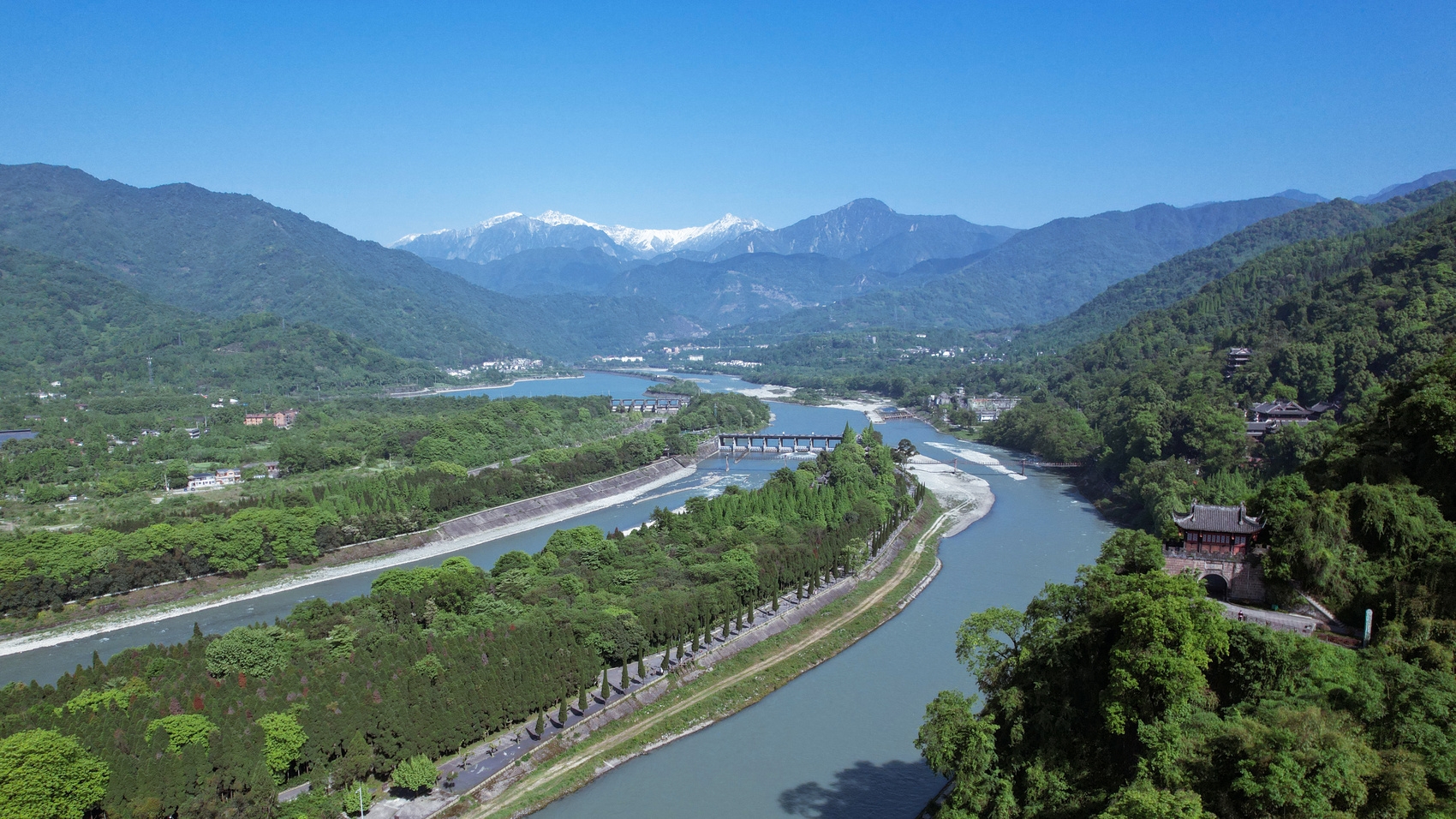Nestled in the heart of Sichuan Province, the Dujiangyan Irrigation System stands as a timeless testament to human ingenuity. Built over 2,250 years ago during the Qin Dynasty (256–206 BCE), this UNESCO World Cultural and Natural Heritage Site is not only one of China’s most iconic ancient wonders but also a pioneering feat of sustainable water management that continues to irrigate millions of hectares today.

A Legacy of Wisdom
The system was conceived by Li Bing, a brilliant governor of Shu Kingdom, and his son to combat devastating floods and transform the arid Chengdu Plain into a fertile breadbasket. By diverting the volatile Minjiang River, Li Bing’s design ensured reliable irrigation, preventing droughts and famines while fostering agricultural prosperity. The region’s subsequent nickname, “Land of Abundance” (Tianfu), owes much to this engineering marvel.
Engineering Brilliance
Dujiangyan’s success lies in its ingenious, eco-friendly design, which harmonizes with nature rather than conquers it. The system comprises three key components:
1. Yuzui Fish Weir : This crescent-shaped weir splits the Minjiang River into two channels. The inner channel (Baopingkou) carries clear water for irrigation, while the outer channel (Feishui Weir) directs floodwaters safely downstream.
2. Baopingkou Channel: A 2.5-kilometer diversion tunnel carved through rock, regulating water flow to farmland via a network of canals.
3. Feishui Weir: A series of spillways and sediment basins that control flooding and naturally filter silt, preventing clogs.
A standout feature is the fish-weed cleaning mechanism: Bamboo cages placed at the weir’s entrance allow fish to swim through while trapping weeds and sediment, ensuring the system’s self-sustaining efficiency.
Cultural & Historical Significance
Dujiangyan symbolizes the ancient Chinese philosophy of adhering to natural laws. Unlike rigid dams, its flexible design adapts to seasonal water levels and geological shifts. Over millennia, it withstood earthquakes, landslides, and floods, including the devastating 2008 Sichuan quake, which left the system intact.
The site also holds cultural and spiritual meaning. Ancient temples, such as Erwang Temple, honor Li Bing and his son as divine figures, while stone tablets and inscriptions document the system’s history and maintenance over centuries.
Modern Relevance
Today, Dujiangyan irrigates over 10 million mu (667,000 hectares) of land, supporting Chengdu’s agricultural heartland. Its principles inspired global irrigation projects, from Vietnam to the United States. Modern engineers blend Li Bing’s wisdom with technology, using sensors to monitor water levels and drones to assess dam integrity, ensuring the system’s longevity.
A Visit to Dujiangyan
Tourists flock to this living heritage site to marvel at its engineering prowess. Key attractions include:
- Yuzui Weir: A stunning example of ancient hydraulics.
- Baopingkou Channel: A serene walk through historic tunnels and canals.
- Feishui Weir: A picturesque area with cascading waterfalls and lush forests.
- Chengdu Water Control Museum: Displays tools and models explaining the system’s workings.
- Mount Qingcheng: A nearby Taoist mountain offering hiking trails and panoramic views.
Boat rides on the Minjiang River provide a unique perspective, while local restaurants serve dishes like hotpot and Sichuan chili chicken, paired with locally brewed tea.
Dujiangyan Irrigation System is more than a historical relic—it’s a living philosophy of balance between humanity and nature. Its enduring success underscores the timeless value of sustainable design and respect for ecological harmony. As climate change challenges modern infrastructure, Dujiangyan serves as a beacon, reminding us that ancient wisdom can illuminate our path forward.
A visit to this marvel offers not just insight into China’s past but also inspiration for a greener future. Here, where water, ingenuity, and nature converge, Dujiangyan truly is a wonder of the world.


